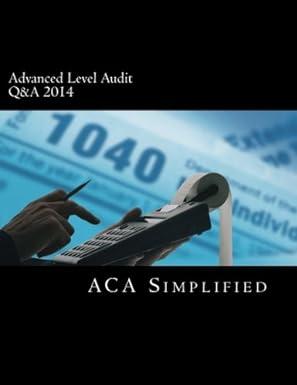Question
Direct Materials, Direct Labor, and Reports budgeted and actual costs for variable and fixed factory overhead along with the related controllable and volume variances.Factory Overhead
Direct Materials, Direct Labor, and Reports budgeted and actual costs for variable and fixed factory overhead along with the related controllable and volume variances.Factory Overhead Cost Variance Analysis
Eastern Polymers, Inc., processes a base chemical into plastic. A detailed estimate of what a product should cost.Standard costs and actual costs for direct materials, direct labor, and factory overhead incurred for the manufacture of 6,400 units of product were as follows:
|
| Standard Costs | Actual Costs | |
| Direct materials | 8,300 lbs. at $5.8 | 8,200 lbs. at $5.6 | |
| Direct labor | 1,600 hrs. at $18.3 | 1,640 hrs. at $18.7 | |
| Factory overhead | Rates per direct labor hr., |
| |
|
| based on 100% of normal |
| |
|
| capacity of 1,670 direct |
| |
|
| labor hrs.: |
| |
|
|
| Variable cost, $4 | $6,340 variable cost |
Required:
a. Determine the direct materials Price variance is the difference between the actual and standard prices, multiplied by the actual quantity.price variance, direct materials The cost associated with the difference between the standard quantity and the actual quantity of direct materials used in producing a commodity.quantity variance, and total direct materials The difference between actual cost and the flexible budget at actual volumes.cost variance. Enter a favorable variance as a negative number using a minus sign and an unfavorable variance as a positive number.
Price variance $
Favorable Unfavorable
Quantity variance $
Favorable Unfavorable
Total direct materials cost variance $
Favorable Unfavorable
b. Determine the direct labor The cost associated with the difference between the standard rate and the actual rate paid for direct labor used in producing a commodity.rate variance, direct labor The cost associated with the difference between standard and actual hours of direct labor spent for producing a commodity.time variance, and total direct labor cost variance. Enter a favorable variance as a negative number using a minus sign and an unfavorable variance as a positive number.
Rate variance $
Favorable Unfavorable
Time variance $
Favorable Unfavorable
Total direct labor cost variance $
Favorable Unfavorable
c. Determine variable factory overhead The difference between the actual variable overhead costs and the budgeted variable overhead for actual production.controllable variance, the fixed factory overhead The difference between the budgeted fixed overhead at 100% of normal capacity and the standard fixed overhead for the actual production achieved during the period.volume variance, and total factory overhead cost variance. Enter a favorable variance as a negative number using a minus sign and an unfavorable variance as a positive number.
Variable factory overhead controllable variance $
Favorable Unfavorable
Fixed factory overhead volume variance $
Favorable Unfavorable
Total factory overhead cost variance $
Favorable Unfavorable
Feedback
Unfavorable variances can be thought of as increasing costs (a debit). Favorable variances can be thought of as decreasing costs (a credit).
The variable factory overhead controllable variance is the difference between the actual variable overhead costs and the budgeted variable overhead for actual production.
The fixed factory overhead volume variance is the difference between the budgeted fixed overhead at 100% of normal capacity and the standard fixed overhead for the actual units produced.
Step by Step Solution
There are 3 Steps involved in it
Step: 1

Get Instant Access to Expert-Tailored Solutions
See step-by-step solutions with expert insights and AI powered tools for academic success
Step: 2

Step: 3

Ace Your Homework with AI
Get the answers you need in no time with our AI-driven, step-by-step assistance
Get Started


